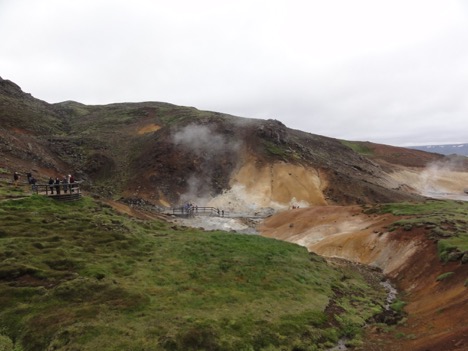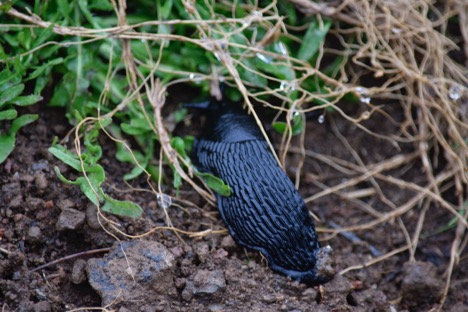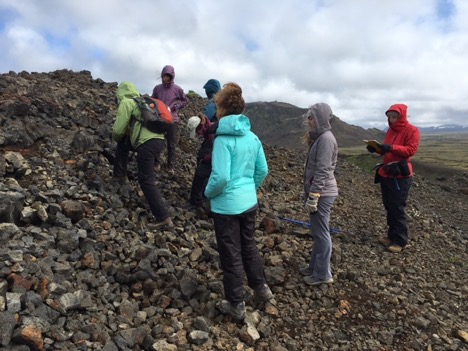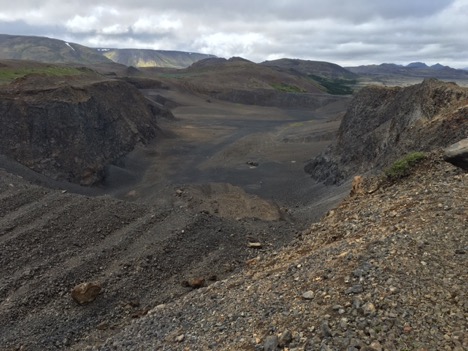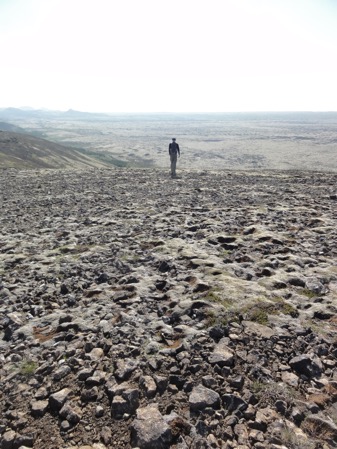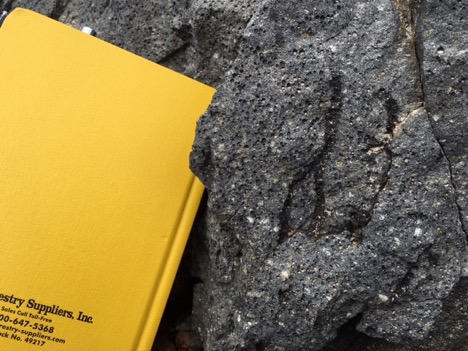 Editor’s note: The following post is from guest blogger Clara Deck (’17) about her research experience this summer with an internship at one of the world’s most prominent laboratories. She is working on an important climate change project involving the carbon budget of permafrost. Last summer Clara completed a dendrochronology climate project in Wooster with Dr. Greg Wiles.
Editor’s note: The following post is from guest blogger Clara Deck (’17) about her research experience this summer with an internship at one of the world’s most prominent laboratories. She is working on an important climate change project involving the carbon budget of permafrost. Last summer Clara completed a dendrochronology climate project in Wooster with Dr. Greg Wiles.
This summer I am working as a research intern at Argonne National Laboratory in Illinois as part of the ten week Student Undergraduate Laboratory Internship (SULI) program. The laboratory occupies 1500 acres located just north of Chicago and is a Department of Energy (DOE) facility. I have the privilege of joining Dr. Julie Jastrow and her terrestrial ecology research team on a project focused on organic carbon stocks in permafrost across Alaska. Soils serve as the largest terrestrial carbon reservoir, containing more than two times the amount of carbon found in the atmosphere.
 About 25% of land mass in the northern hemisphere is dominated by permafrost soils. The long term goal of this project is to improve estimates of the total quantity of C contained in permafrost, as findings to-date are immensely variable. This is important because soil carbon will be affected by environmental change, especially in high latitude regions.
About 25% of land mass in the northern hemisphere is dominated by permafrost soils. The long term goal of this project is to improve estimates of the total quantity of C contained in permafrost, as findings to-date are immensely variable. This is important because soil carbon will be affected by environmental change, especially in high latitude regions.
Field sampling targets features known as ice wedge polygons, which form similarly to mud cracks, but then fill with ice. The soil within these polygons is characterized by substantial cryoturbation, or mixing, due to freeze-thaw processes.
A trench like this is dug across a polygon, in order to sample from each distinguishable layer across an entire transect. This summer, I am performing fractionation procedures on these samples, which means separating the soil into different size components. The fractions will then be analyzed for carbon content. I will then use GIMP Image Manipulation Software to convey C density data in a cross sectional image of the polygon.
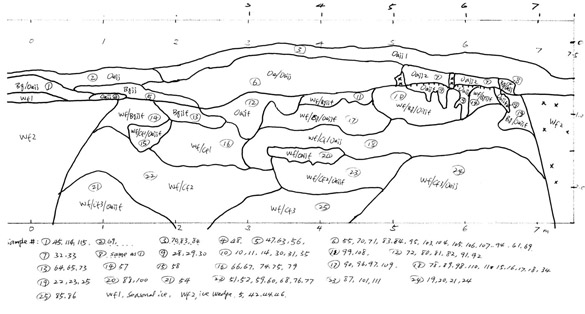
(J.D. Jastrow (Argonne National Laboratory) and C.L. Ping (University of Alaska Fairbanks), unpublished data)
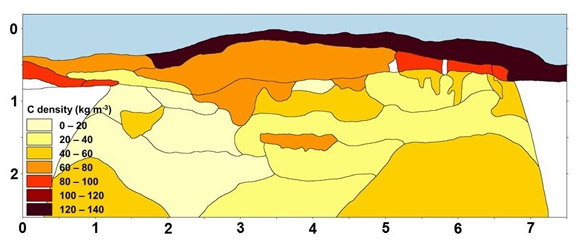
(IJ.D. Jastrow (Argonne National Laboratory) and C.L. Ping (University of Alaska Fairbanks), unpublished data)
These diagrams illustrate the progression from a field sketch to a digital image showing C density in a polygon cross section. Ice wedge polygons adhere to large scale patterns across the landscape, so data from each polygon has upscaling potential for larger models. Further studies will include analysis of the carbon decomposability and the depth to which permafrost will thaw with predicted temperature rise.
I am excited to be at Argonne conducting research so closely related to modern climate change, and will be continuing these studies throughout the year for my Senior Independent Study. Thanks for reading!























